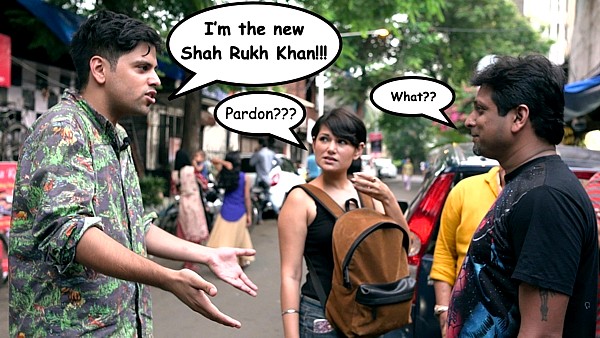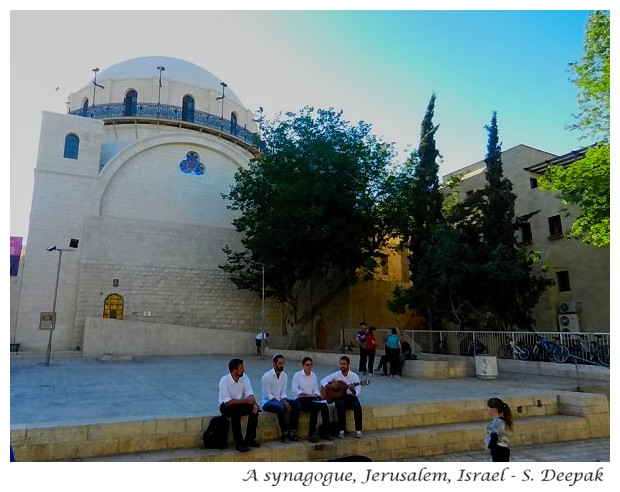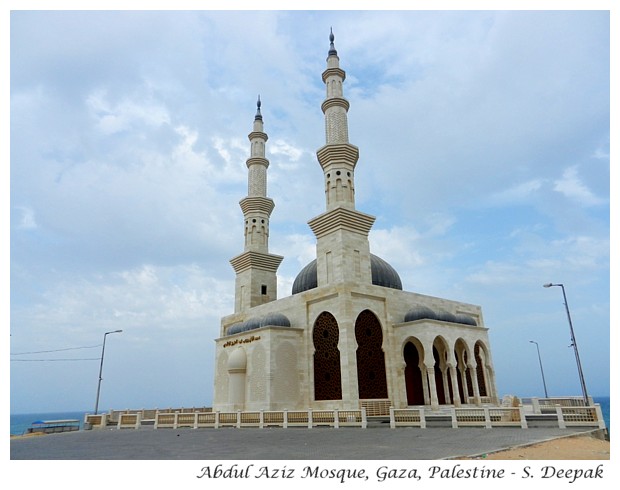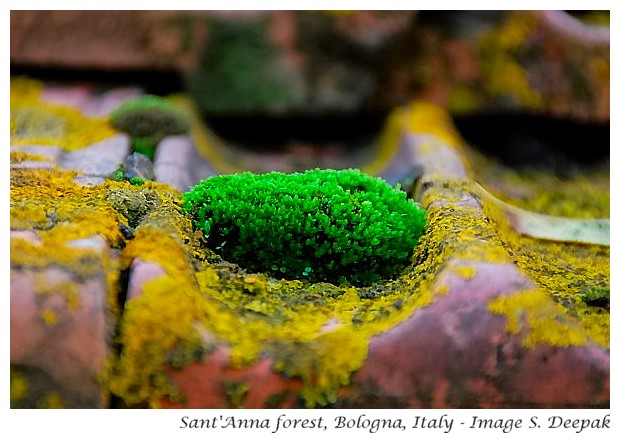Some months ago I had read an article in
The New Scientist about an App for the mobile phones which can help you to keep in contact with your friends and remember their birthdays and children's names. While reading it, I had thought that it must be a dystopian world where you had to be reminded about such things. Our friends are people we really like, without whom our lives are incomplete - if we don't see them or hear from them for some time, we miss them. So I thought that we don't need Apps to remind us about them.
Perhaps the problem is more about whom do we consider as a friend? According to British anthropologist Robin Dunbar, the human beings can have at the most 150 friends, out of which not more than 15 can be called "close friends" and less than 5 can be "intimate friends".
This reflection about friendships was provoked by a book called "Miss Benson's Beetles" by the British author Rachel Joyce. The book is about two very different women, who embark on a journey in the early 1950s from England to the other end of the world in New Caledonia in the south-west Pacific.
The Joyce's book is about being a woman in a world dominated by men, and it is also a book about a female-bonding. This post is about this book and is also about friendships.
Two Women Friends Genre
Two women on a road trip or a journey, with elements of female solidarity and friendship, where the journey leads to an understanding about the self, can be considered as a specific genre. Some months ago, I had written
a post about the book "Remarkable Creatures" by Tracy Chevalier, which was on the same theme. Often discussions about this theme veer towards the film "
Thelma and Louise" which is probably the most well-known work in the genre. They have a common structure. Often the two women are very different and that adds an element of challenge to their bonding, and acts as a point of tension in the story.
In India we say that all possible story-plots have been already described in the Mahabharata. Good writers can take a plot and add something unique to it. Rachel Joyce also has that knack - within the genre of "two women on a journey", she adds her own dimensions, which make for a wonderfully told story.
Miss Benson's Beetle
Miss Benson, the heroine of the book is not the kind of person who gets to play an important role in the stories. She is closer to fifty, a spinster, tall and big, and without much grace. Mrs. Pretty, the second woman of the book is younger, with curves and hair dyed yellow, with a hint of dyslexia, who tends to end up with the wrong kind of men. Both are running away from something and thus embark on a journey to New Caledonia, a French territory located in south-west Pacific.
In the beginning, Miss Benson can hardly bear to be with the constantly talking Mrs. Pretty and is determined to replace her with someone better suited to be her assistant. Instead, the events force the two women to be together and to face different adventures in their search for the gold-coloured beetle hiding in a tropical forest at the top of mountain.
The different situations force the women to face ever-new difficulties, and finding ways to overcome them. In the process, they learn to accept themselves and each other. Joyce writes the characters of the two women with sympathy and humour. It makes you laugh, even while you sympathise with their terrible situations.
Joyce has a way with words which I loved. For example, Barbara, the maid in the house of Miss Benson's aunts' is described as someone who "
took all instruction as a personal affront." At another place, Miss Benson and Mrs. Pretty are described as "
a brown ostrich coupled with a pink-hatted canary". When the ship leaves the port, "
It wasn’t just the ship that had been unmoored. It was her entire sense of herself." Mrs. Pretty's suitcases look like "
coffins for baby dinosaurs" while the light plays across the mountains "
like emotion on a human face".
Here is how she describes them after they reach New Caledonia:
French. Another problem. Everywhere she went she heard words and sounds she didn’t understand. Vowels that ran like small motors, tongues purring, explosive combinations of consonants. She tried the everyday phrases in the guidebook, and no one had a clue what she was talking about. If anything, they looked concerned. She had no idea how to get it right.
Fortunately, Enid had a flair for communicating in a foreign language that took everyone by surprise, including speakers of foreign languages. She didn’t give a damn about getting it right. She got the hang of basic words like fromage and café au lait, as well as scarabée for beetle, and the minute she got stuck, she mimed. “Bon shoor!” she would yell. “Have you seen un gold scarabée?” Or “Do you know un mountain dans le shape of un wisdom tooth?” She flapped her arms like wings; she pretended she had a great big beetle stomach; she even showed people her back molars.
However, it is through a marginal character, a woman called Freya who works in the natural history museum and appears towards the end of the book, that Joyce explains how she sees the place of women in professional spaces dominated by men, which really struck me:
She didn’t know why but she had a feeling they were the work of another woman. Maybe it was just her fantasy. She was lonely, that was the truth, really lonely. Her working hours were so long she’d given up on the idea of having a family - she couldn’t even hold down a relationship - and when she went on an expedition, she was set apart from her male colleagues by problems they didn’t have to think about. Not only periods, or where to pee safely, not even the endless jokes about her physical strength. But the sense she was never really going to get what she wanted. More than a few times a colleague had reached out a hand when she didn’t need help, and squeezed too hard. She’d been talked down and talked over. She’d missed a couple of promotions she should have got.
And yet, deep down, she knew she couldn’t really blame anyone else. Out of some strange mad desire not to upset the status quo, she’d become complicit. She had laughed when she should have been angry, or said nothing when she should have said a lot. She’d belittled her own achievements, calling them small or unformed or even lucky when they were none of those things. And it wasn’t simply opportunities at work she’d lost out on: she had - and, again, this was her own choice - missed the weddings of her closest friends, just as she’d missed their children’s christenings.
I greatly enjoyed reading Miss Benson's Beetle. Lately, I have problems with fiction books - most of the time, I get bored with them after a few pages - even with thrillers and mysteries. It was consoling to finally find a book in which I could lose myself. After a long time, here was a book that I tried to read slowly so that the pleasure of reading it could last longer.
That does not mean that I don't have anything critical to say about it. My biggest criticism of the book is about its lack of any local characters from New Caledonia because its world is exclusively colonial. I don't recall any of the local characters having a name, unless we can consider the local dog as a character. Giving names to persons is to recognise their humanity and it felt strange to me that with all Miss Benson's empathy, the people of New Caledonia were only nameless waiters, policeman or the shanty town kids, even when she lives with them for months.
Miss Benson explains how she sees the world at one point in the book - unless something is named and classified by a British institution, it does not exist:
“No, Mrs. Pretty. A thing doesn’t exist until it has been caught and presented to the Natural History Museum. Once the Natural History Museum has accepted the beetle, and read my descriptions and notes, and found that it is genuinely a new specimen, it will be given a name. And then it will exist.”
I felt that this was a completely colonial way of reading the world. The locals might have known about those beetles for hundreds of years, they might have their myths and stories about them, but the beetles were only "discovered" when Miss Benson would write to her museum in Britain about it and obviously she can name them after her father!
Since in early 1950s, the world was still largely colonial and as far as I know, New Caledonia is still a French territory, so probably we can justify this way of seeing the world as being realistic for those characters. Yet, the enlightened Miss Benson could have been a little more aware of other cultures and people. Anyway, it is a minor squabble and this lack of sensitivity towards the locals and their culture, did not really affect my enjoyment of the book.
Fiction books are imaginary worlds which the authors make seem like real. While the first 3/4th of the book has some semblance of realism, the last one fourth of the book turns into a fable. There is even an Avatar like scene with psychedelic colours, flowers and golden insects. Generally, I don't like fantasy books. However, in this book, by the time this part came, I was already in love with the two characters, and was relieved that they were spared additional challenges and the story could have an emotionally satisfying ending.
Female Bonding versus Male Bonding
The book also made me reflect on the differences between female bonding and male bonding. I have seen some films on male bonding during a journey, but I feel that is completely different from the kind of relationships between women depicted in Miss Benson's Beetle or in Remarkable Creatures. This particular genre of stories where excluded persons, whom life has bypassed or mistreated, one older and the other younger, and their relationship developing over the course of the story, does not seem to work for men. Scenes like the one in Miss Benson's Beetle, where after taking a nude bath in a forest pond, the younger woman lies down with her head on the thighs of the older woman, would have got a stronger sexual connotation with men, while in the book, it seemed more like an expression of tenderness and solidarity.
The relationship between Miss Benson and Mrs. Pretty develops through moments of being vulnerable and acceptance of tenderness. I don't think that we men are much open to being vulnerable or accepting tenderness, especially from other guys. Thus, a book about male road-trip story of self-discovery would probably have a very different feel.
Books about male bonding are those based in male-only schools, in ships with an all male crew and in some stories about wars. There are also stories like the Brokeback Mountain, which are more about gay love. In term of texture and characterisations, they are very different from these female-bonding stories. If you know of any other kind of good books which have male bonding between two very different men as a theme and are not about gay love, I would like to know about it - do let me know.
Conclusions
I had just finished reading this book, when I found that by coincidence, our reading group has decided to read another book by Rachel Joyce - "The incredible pilgrimage of Harold Fry". I am looking forward to reading that.
In the meantime, I recommend - do read Miss Benson's Beetle - I hope that you will enjoy it as much as I did!
***


































